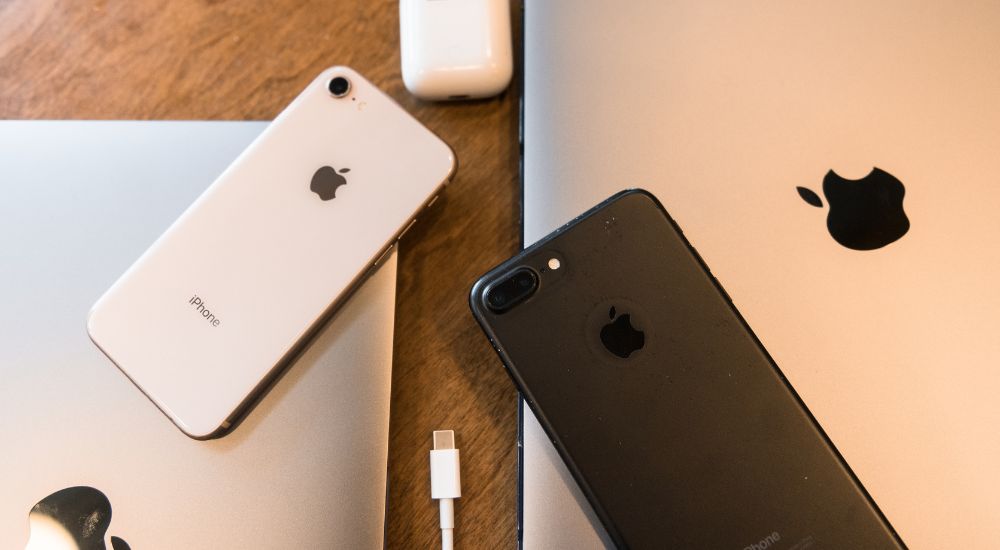A report by Statista found that, in 2022, mobile gaming accounted for almost half of the worldwide gaming revenue. While the gaming market is not the gold rush it once was back in the early days, there is still plenty of money to be made.
Unsurprisingly, the low entry cost ($99/year), the ever growing market share of mobile gaming and the allure of huge potential profits have attracted a lot of new game developers, who might feel a bit lost on how to develop an iOS game with Unity.
It’s true: developing commercial games is a hard task no matter how you approach it. This is why, in this post, we’ll talk about the requirements to get started with iOS game development and the 6 fundamental steps in Unity, giving you a bird’s eye view on the entire process from start to finish.
As such, let’s get started!
What do I need to start an iOS game development with Unity?
Money and/or time
Games take months to be developed. AAA games can take multiple years of development before they’re ready for release. As such, patience and perseverance are a must.
Other than that, you will be required to create or buy assets for your game, money to pay your employees (if working as a team) or outsourced artists, and money for software licenses to name a few.
A good computer
High performance machines are a must when it comes to testing the game via emulators as they will allow you to check and review your iOS game in a wide variety of situations – be it low loads or under high stress. 3D artists and level designers also benefit greatly from having powerful computers at their disposal as modeling and sculpting can be very CPU intensive processes.
Softwares
- Unity, which is your game engine
- XCode (or another Integrated Development Environment (IDE))
- Blender/Maya/ZBrush for 3D modeling
- Audacity and FL Studio for sounds and music
- Adobe Photoshop, Krita or GIMP for 2D graphics and image manipulation
- If you’re developing on a Mac, you will need the iOS SDK
If your budget allows, devices with different iOS versions
Quality Assurance (QA) testing on multiple devices (preferably with different iOS versions) will allow you to fix user interface (UI) and compatibility issues ahead of launch.

Developing your iOS game with Unity
1. Set your accounts up
Before starting to develop your game, make sure you have a Unity and an Apple Developers account.
Unity, the game engine of choice for most beginners, has multiple licensing plans, and you need to choose the one that is right for you. However, as long as your project hasn’t made more than $100,000 in revenue, you will be able to keep using the free plan.
If you plan on publishing your game to Apple’s App Store, then having an Apple Developers account is a must. The registration process will require an Apple ID and a DUNS number in the case you’re developing your game as a company.
The enrollment will set you back $99 USD (or in local currency where available) per membership year, but some companies/institutions/entities might be eligible for a fee waiver (more details here).
2. Create your Game Design Document (GDD)
You can’t make a game without an idea, so better get your brain’s gears turning! You don’t need to reinvent the wheel and go for a truly unique game, though. Generally speaking, starting with a simple, albeit tested concept and sprinkling some ideas of your own on top of it is a much easier way to design a game.
Once you have that down, write yourself a Game Design Plan (GDD), which will serve as the backbone of your entire project. Don’t be afraid to change things up if your original design has some flaws, though! As long as you keep it up to date, the GDD will be useful and keep everyone on the same page.
In the GDD, all the information regarding your game’s executive summary, setting, lore, worldbuilding elements, gameplay, mechanics, challenges/player objectives, art style, monetization methods and other things should be written in detail.
3. Start developing your iPhone game with Unity
In addition to the core game’s logic, don’t forget to make clever use of the iPhone’s and iPad’s functions to enhance your game’s experience, such as vibrations, activity indicators and full screen mode..
Don’t forget to use the GDD as your reference and always read the documentation to get a glimpse of what’s possible – including how to implement those functionalities yourself!
As a reminder, iPhone and iPad apps run on Swift or Objective-C, but development in Unity uses C#. For this reason, calling native functions in those languages using special C# scripts is a must. There are some plugins that will help you handle this process.
4. Create and implement your iOS game’s assets
Aside from purely text-based ones, no game is complete without assets. And they’re damn important, too. A survey by Consumer Electronics Association found that graphics play a part in their decision to purchase a new game for around 75% of gamers, so making sure the game looks pretty is a must.
It doesn’t need to be realistic, but the style must be aesthetically pleasing and cohesive within the game.
However, graphics and sprites are only a fraction of the whole, making asset creation one of the most expensive parts of developing a game. In addition to those two elements, you will need to download free-to-use or create an easy to navigate user interface (UI), sound effects, background music, 3D models and their animations (in the case of 3D games), among many other elements.
If you don’t want to spend time creating those assets yourself, outsourcing them is an option and so is hiring a professional.
5. Quality assurance: test your game
QA testing is one of the most important steps in the development of a game. Those professionals will test your game from a technical point of view to ensure the minimum amount of bugs, crashes and exploits. In case any is found, QA testers will write up detailed logs and steps to reproduce the errors, allowing developers to fix them.
As such, they are invaluable professionals in the game development industry.
While you’re at it, make sure to build prototypes to flesh out and improve your base game’s design and experiment with different UIs to see which one will work the best for your players.
Some developers will also introduce a beta test for their iOS games, which allows them to find compatibility issues, device-specific errors and performance metrics. This enables them to fix those issues, improve the overall performance and take their mobile game to the next level.
As always, don’t forget to keep the GDD updated as you develop your game!
6. Implement your monetization methods
One of the most important questions to ask yourself when brainstorming about your game is how you will make money from it.
It’s a fact that there is no simple answer to this – as monetization can take a surprising variety of forms. However, most free iOS games use a combination of in-app purchases (or IAPs) and small banner/video ads that are triggered on certain conditions to generate revenue. Other developers prefer to go for a monthly subscription model or even require you to pay for access to the game.
All in all, there is no best method, and you will have to research and decide for yourself which ones make the most sense for your game and audience.
Oh, and NEVER put ads on premium mobile games!

Consider hiring experienced professionals
Now that you have seen the entire process laid out in front of you, game development might seem a long and daunting process, huh?
However, if you don’t want to deal with the nitty-gritty aspects of creating a game, then consider hiring a team of seasoned professionals with hundreds of years of collective experience under its belt.
We are Main Leaf, a game development studio that creates stunning games on demand, and we would be pleased to work with you on your game idea from start to finish.
Do you want to know more? Head to the top of this page and request a game quote today. We will get back to you as soon as we can!

